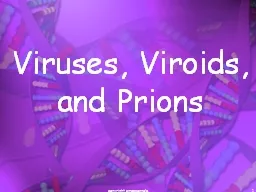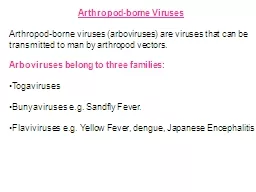PPT-Viruses Chapter 33 Roadmap.
Author : ellena-manuel | Published Date : 2018-11-10
2017 Pearson Education Inc Introduction A virus is an obligate intracellular parasite Viruses enter a host cell and use the host s biosynthetic machinery to
Presentation Embed Code
Download Presentation
Download Presentation The PPT/PDF document "Viruses Chapter 33 Roadmap." is the property of its rightful owner. Permission is granted to download and print the materials on this website for personal, non-commercial use only, and to display it on your personal computer provided you do not modify the materials and that you retain all copyright notices contained in the materials. By downloading content from our website, you accept the terms of this agreement.
Viruses Chapter 33 Roadmap.: Transcript
Download Rules Of Document
"Viruses Chapter 33 Roadmap."The content belongs to its owner. You may download and print it for personal use, without modification, and keep all copyright notices. By downloading, you agree to these terms.
Related Documents














![Module VI.1 Roadmap development Trainer: [Name]](https://thumbs.docslides.com/1068018/module-vi-1-roadmap-development-trainer-name.jpg)